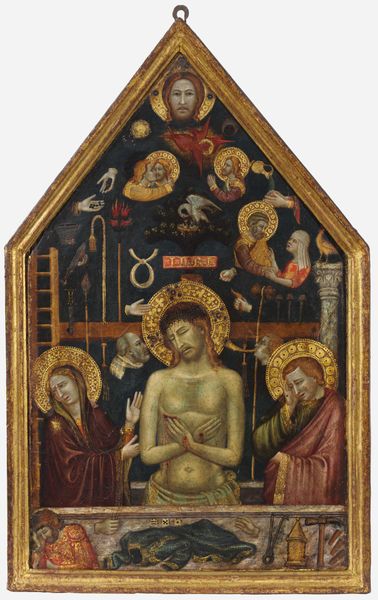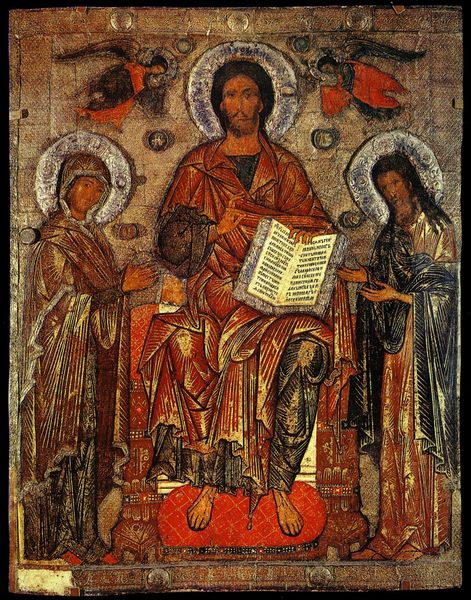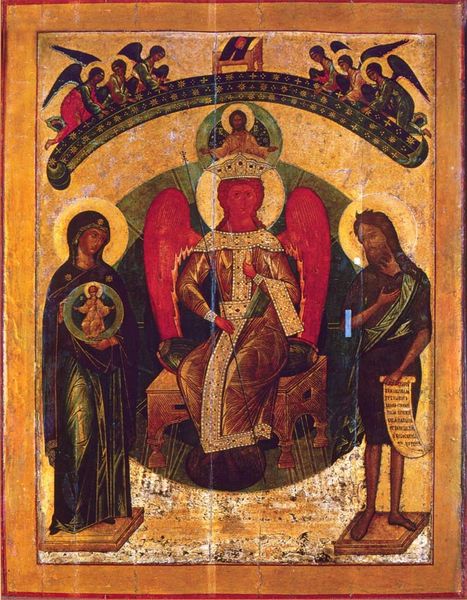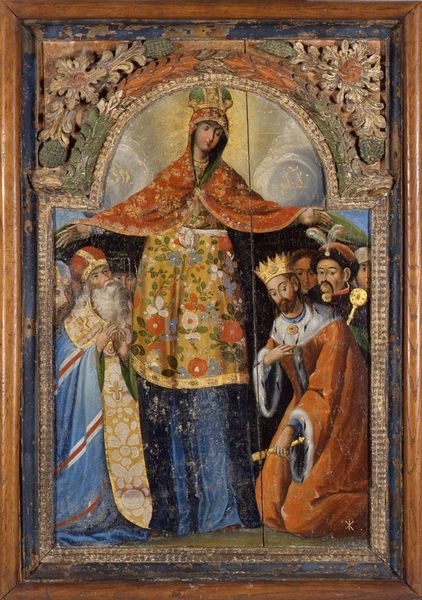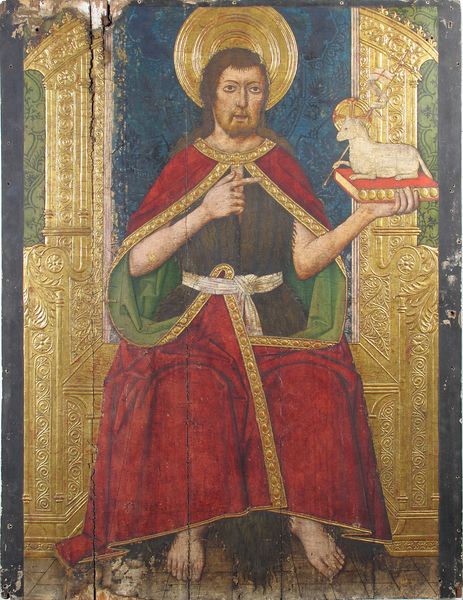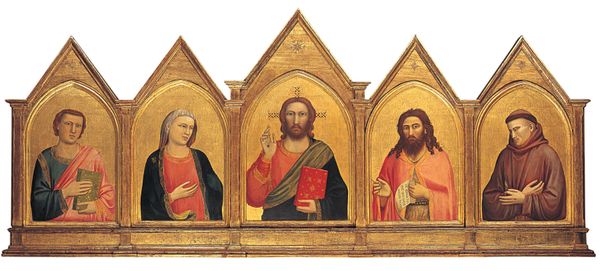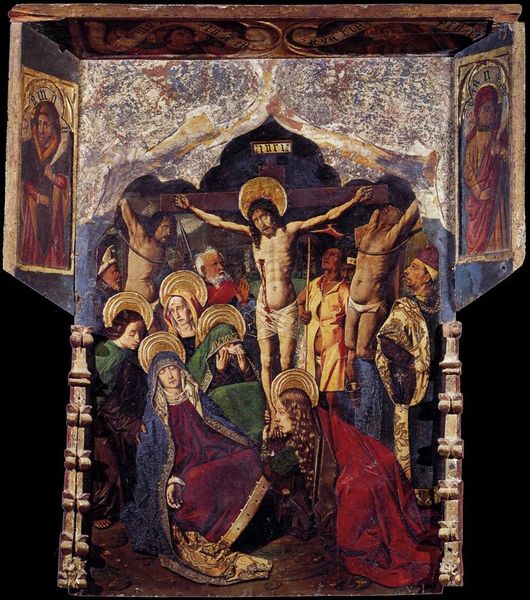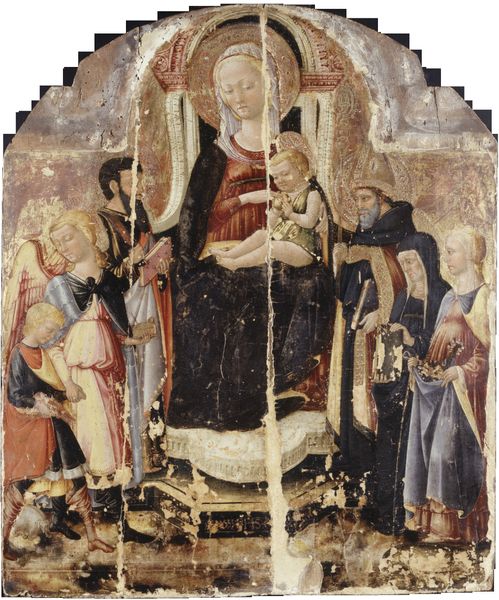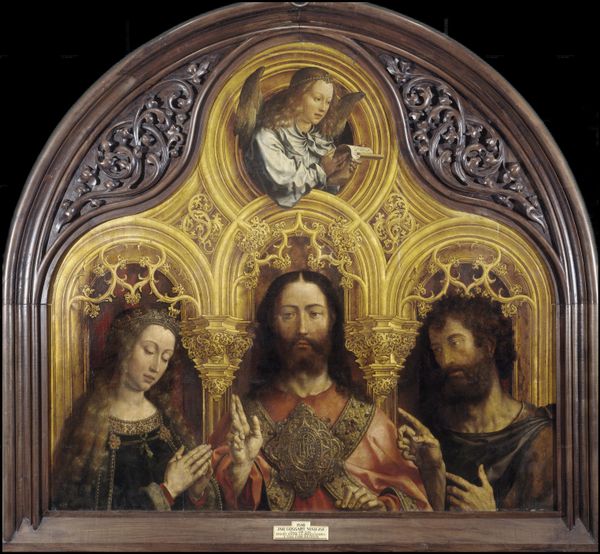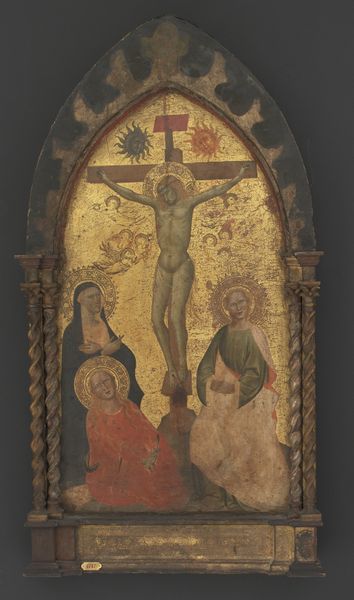
tempera, painting
#
portrait
#
byzantine-art
#
tempera
#
painting
#
folk art
#
folk-art
Copyright: Orthodox Icons,Fair Use
Editor: Here we have "Deesis," a tempera painting from 1760, currently held at the National Art Museum of Ukraine. There’s something striking about the color palette, and how it blends the traditional religious iconography with these really interesting folk art elements. What stands out to you? Curator: I’m immediately drawn to the context in which this icon was created. Remember, 1760 Ukraine was a place grappling with shifting identities under various empires. So, consider what it means to represent Christ, the Virgin Mary, and John the Baptist through this lens of folk art. The figures, adorned with those intricate, almost textile-like patterns on their garments, feel like a deliberate act. Don’t you think those design elements tell a story of resistance or perhaps preservation of cultural identity within a dominant religious narrative? Editor: I hadn't thought about it that way. I was focusing on the aesthetics, but I see what you mean. It’s almost like embedding a secret code within a sacred image. Does that connection to folk art give it a different kind of power? Curator: Precisely! Think about who might have commissioned and viewed this piece. Was it for a wealthy patron wanting to display Ukrainian identity? Or was it meant for more popular, grassroots devotion? How might different groups have interpreted those deliberate artistic choices during that period? It is not simply about religious piety, but about community, identity, and perhaps a subtle act of defiance in a landscape marked by cultural oppression. Editor: It’s like this icon isn’t just representing biblical figures, but a whole community, struggling to maintain their identity. That adds such a deeper dimension. Curator: Absolutely. Art becomes a mirror, reflecting the social and political anxieties, dreams, and acts of resilience within a particular moment in time. What seemed like mere aesthetics now resonates with profound social and political significance. Editor: I'll definitely look at religious art differently from now on! Thanks for opening my eyes.
Comments
No comments
Be the first to comment and join the conversation on the ultimate creative platform.

